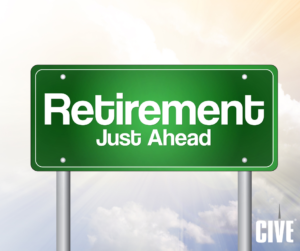Although exacerbated by the COVID-19 pandemic, the United States has been facing a skilled labor shortage for years. Across multiple industries the number of unfilled job openings is increasing at an unprecedented pace.
Described by the U.S. Chamber of Commerce as a “national crisis”, the multifaceted labor shortage is not only having a profound effect on the members of the labor force, but also the entire United States economy and therefore every one of us. Factor related and unrelated to the pandemic have caused the skilled labor shortage to increase by over two million (2,000,000) workers in the last four years.
Contributing Factors
The COVID-19 pandemic isn’t the only thing effecting the skilled labor shortage in the United States. Other contributing factors include:
- Aging workforce
- Technological advancements
- Shifting of primary industry
- Perception and representation
The Aging Workforce
The aging workforce presents many significant challenges. Many members of the Baby Boomer generation (immediately following the Silent Generation but preceding Generation X) are retiring. Making up nearly a third of the workforce, this is significantly more than both the Silent Generation and the Greatest Generation at the same age. Occupying both skilled labor and unskilled labor positions, this mass retirement is leaving a gap that many industries are struggling to fill.
Additionally, as one of the largest generations in recorded history, the Healthcare and Caregiving Demands associated with the aging population are unprecedented. Not only do health complications cause more people to leave the workforce at suboptimal times, but they also result in a greater demand for healthcare workers.
Contributing Factors
The COVID-19 pandemic isn’t the only thing effecting the skilled labor shortage in the United States. Other contributing factors include:
- Aging workforce
- Technological advancements
- Shifting of primary industry
- Perception and representation
The Aging Workforce
 The aging workforce presents many significant challenges. Many members of the Baby Boomer generation (immediately following the Silent Generation but preceding Generation X) are retiring. Making up nearly a third of the workforce, this is significantly more than both the Silent Generation and the Greatest Generation at the same age. Occupying both skilled labor and unskilled labor positions, this mass retirement is leaving a gap that many industries are struggling to fill.
The aging workforce presents many significant challenges. Many members of the Baby Boomer generation (immediately following the Silent Generation but preceding Generation X) are retiring. Making up nearly a third of the workforce, this is significantly more than both the Silent Generation and the Greatest Generation at the same age. Occupying both skilled labor and unskilled labor positions, this mass retirement is leaving a gap that many industries are struggling to fill.
Additionally, as one of the largest generations in recorded history, the Healthcare and Caregiving Demands associated with the aging population are unprecedented. Not only do health complications cause more people to leave the workforce at suboptimal times, but they also result in a greater demand for healthcare workers.
Technology is advancing at a pace never before seen in the modern era and this can be difficult to adapt to. Older workers may be less familiar with new technologies compared to their younger counterparts which can result in a technological skill gap between workers. This gap, however, can widen in both directions as the younger generations can potentially lose skills that are advantageous in the workplace. Decades worth of institutional knowledge is being lost as the retirement of older workers continues to increase. This may lead to a knowledge transfer gap that can cause inefficiencies and a decrease in quality as newer employees may not have the same level of expertise or may require significant training to reach comparable levels of competency.
Technological Advancements
As technology continues to advance and industries continue to incorporate it, the barriers to entry for many positions increase. The growing demand for high-skill workers with an emphasis on STEM (Science, Technology, Engineering, and Mathematics) exacerbates the shortage as the education and training systems struggle to produce enough graduates with the necessary skills and existing workers struggle to transition to the demands of the high-skill positions. For many positions, especially in STEM, high-level education requirements have either replaced training and certification requirements or have become required in addition to training and certifications. This increased barrier to entry prevents many potential workers from finding work and from filling skilled labor positions.
Technology outpacing worker education and skill is not just a skill with the older generations. Many workers are under pressure to adapt to new and confusing technology resulting in people leaving their jobs or not accepting open positions. There is a growing need for workers who are both proficient in current and able to adapt as new technologies and processes are implemented.
Shifting of Primary Industry
The United States has undergone a shift in recent decades from a manufacturing economy to a service-oriented economy. Contributing a substantial portion of the United States GDP (Gross Domestic Product) and employment, the service sector includes industries such as transportation, leisure and hospitality, financial services, healthcare, information technology, movie theater and other forms of entertainment, and hundreds more.
This shift caused a change in available jobs and potential employers resulting in a higher demand for professionals in healthcare, education, information technology, and financial services. Jobs in a manufacturing economy may require training but most jobs in a service economy require higher education as well as training. This, like technological advancements increases barriers to entry for many positions.
Service industry jobs also vary widely, with those not requiring higher education offering lower wages and fewer benefits than jobs with increased barriers to entry. Despite this shift, access to higher education and specialized training has not become easily accessible for all income levels. This means that many people who are willing and able to fill skilled labor positions are prevented from doing so.
Perception and Representation
Perception and representation are a vital part of the job market. Jobs that are presented as less desirable are more likely to be unfilled. With a push in recent years towards college or university, many members of the younger generations see their options as black and white. Either they earn a degree or work in unskilled labor. This is simply not true.
While it is certainly true that the barriers to entry for many skilled labor positions have increased, these are not the only skilled labor jobs seeing a labor shortage. There are hundreds of thousands of job openings in the construction industry and similar skilled labor fields. Jobs that may require vocational training such as mechanics, plumbing, electricians, carpentry, and heavy machinery operation are all suffering from the persistent skilled labor shortage.
What can be Done?
 Many companies have begun implementing training and apprenticeship programs to educate and transition new and existing workers. This can eliminate many of the barriers to entry that are holding back so many potential hires. Additionally, enhancing their workforce skillset can improve efficiency and even reduce the need for more employees.
Many companies have begun implementing training and apprenticeship programs to educate and transition new and existing workers. This can eliminate many of the barriers to entry that are holding back so many potential hires. Additionally, enhancing their workforce skillset can improve efficiency and even reduce the need for more employees.
By combining practical, on-the-job training with classroom instruction, companies can produce the type of worker they are searching for instead of waiting for skilled workers to come to them. This also helps to remove some of the pressure of applicant who would not only be guaranteed well-rounded and useful training but also a stable and beneficial job.
Not much can be done about the Baby Boomer’s mass exodus from the workforce, but removing some of the barriers to entry that hold new workers and younger generations back could help soften the blow. It is vital that industries learn from this mistake and make an effort to diversify the workforce. By relying so heavily on Generation X and Baby Boomers, they have been set up for a shortage when these generations start retiring en masse. By recruiting the younger generations before the established workforce starts leaving it can help to prevent incidents that this from reoccurring in a cyclical pattern.
Improving industry perception can help to combat the recent trend toward jobs that require college or university degrees. Construction and other trades are often viewed as a “last resort” or “back up” career path. By advertising and promoting the benefits of careers in these fields, it could alleviate some of the labor shortage struggles.
There are fruitful, long-term, and stable careers in construction and other skilled labor sectors that do not require a degree from a college or university. Many of the jobs require additional training and certification but by offering said training and certification as mentioned earlier, it may entice new employees.






